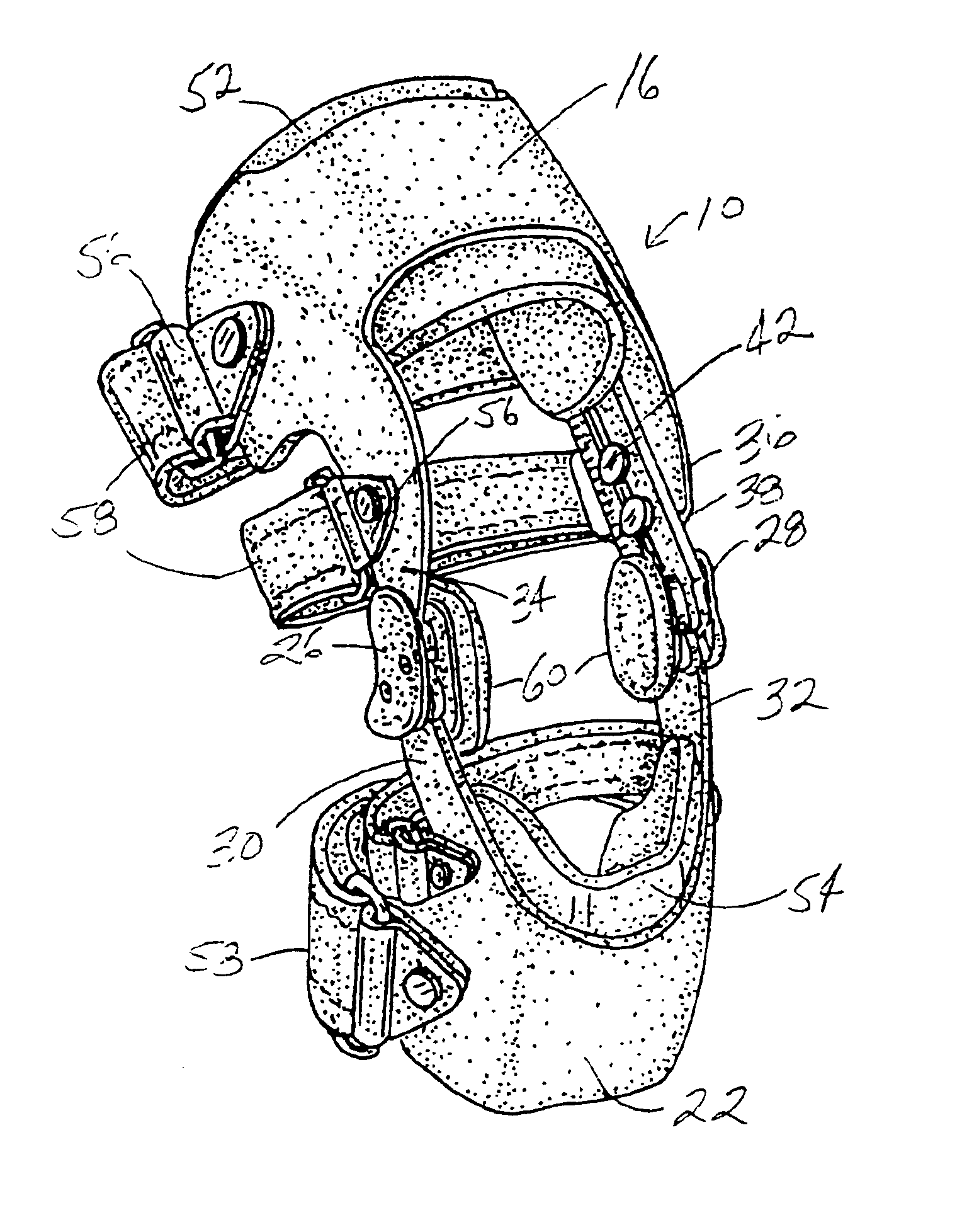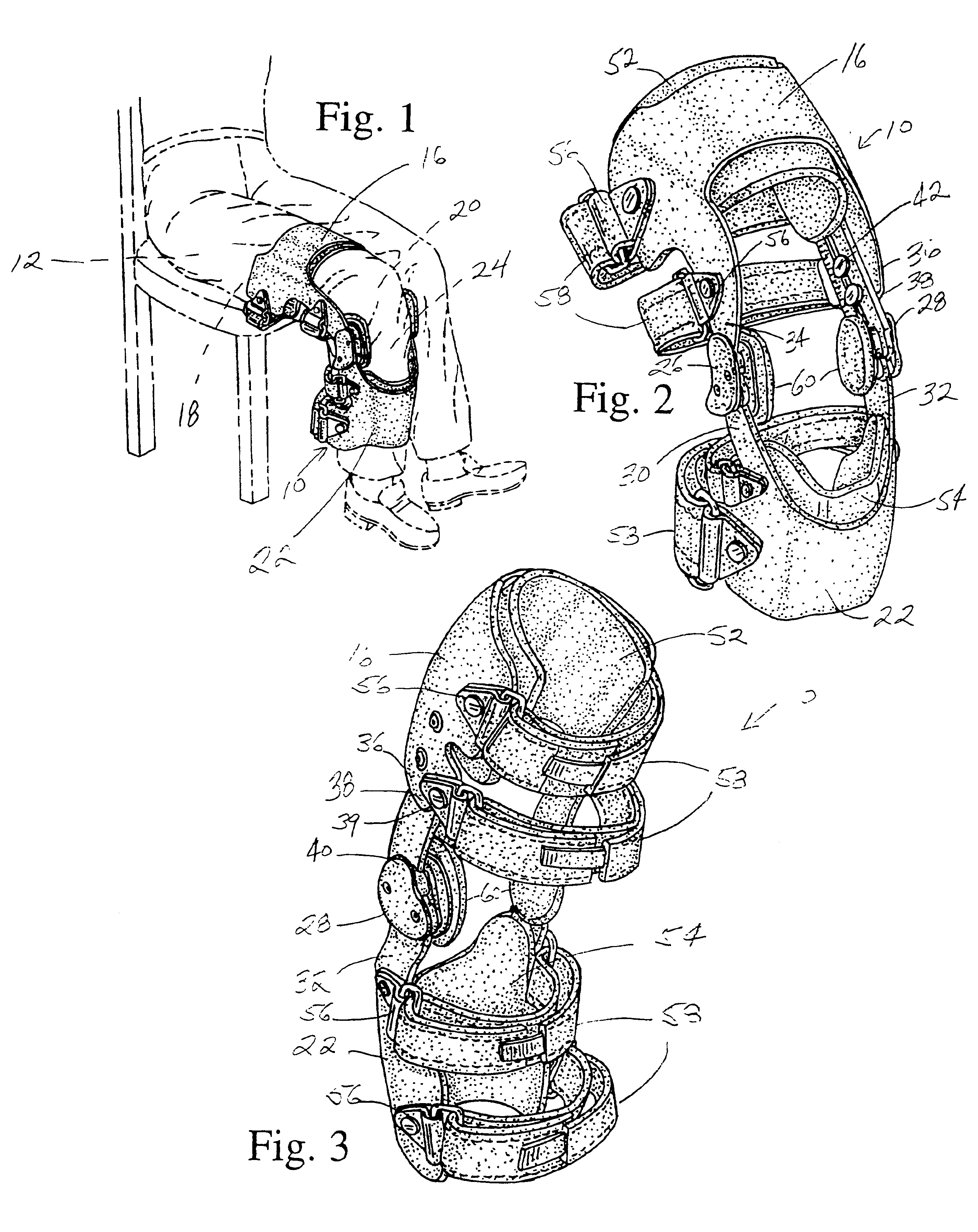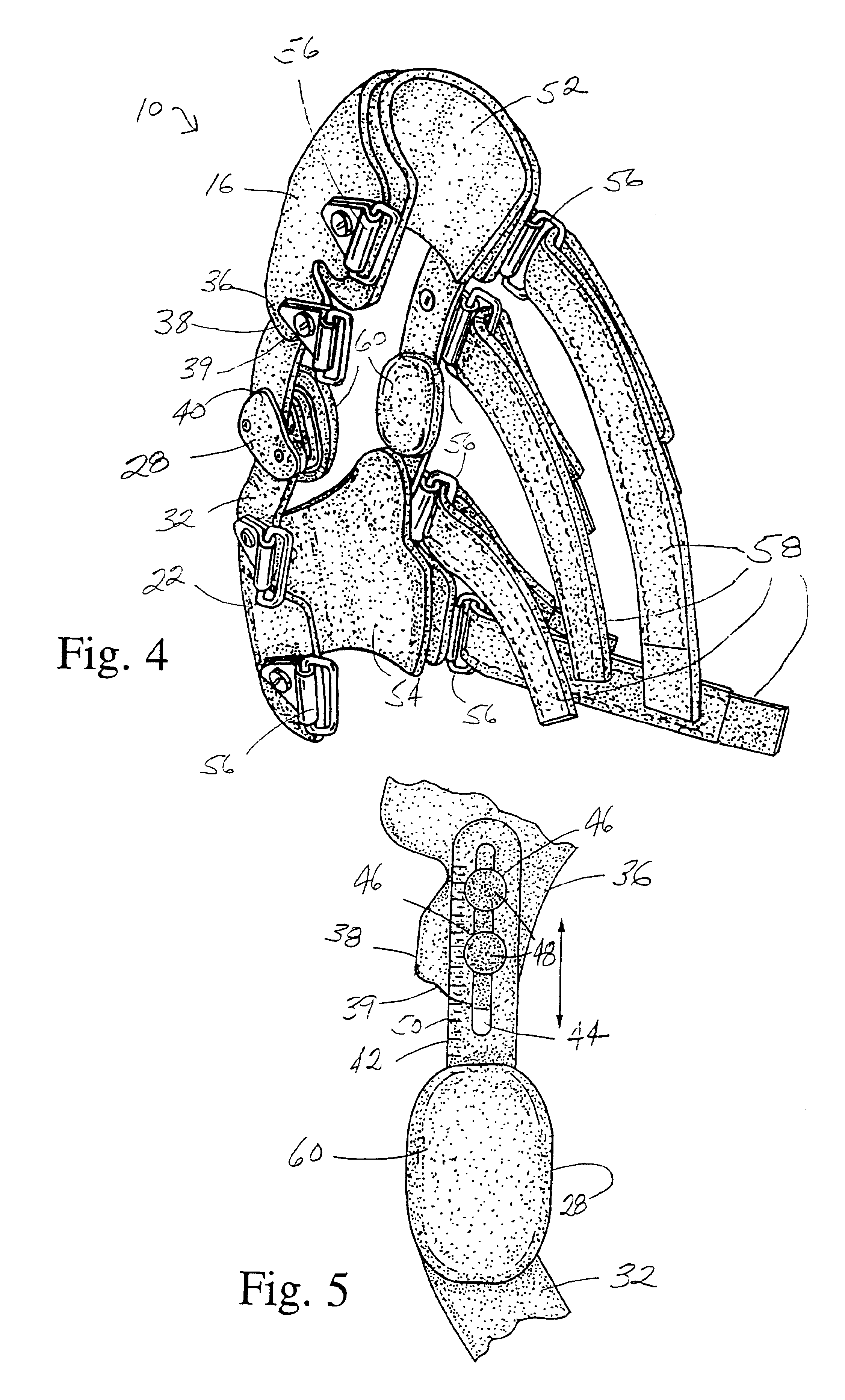Osteo-arthritis knee brace
a knee brace and osteoarthritis technology, applied in the field of knee braces, can solve the problems of pain, stiffness and swelling, affecting the function of the lower leg flexion at the knee joint, and the impact between the upper brace portion and the hinge, so as to improve the curvature of the leg and facilitate the treatment of osteoarthritis
- Summary
- Abstract
- Description
- Claims
- Application Information
AI Technical Summary
Benefits of technology
Problems solved by technology
Method used
Image
Examples
Embodiment Construction
Referring to FIGS. 1-4, a knee brace 10 for supporting a leg 12 of a wearer is illustrated. The brace 10 has an upper member 16 partially surroundingly encompassable about an upper leg portion 18 situated above the knee joint 20 of the wearer, and a lower member 22 partially surroundingly encompassable about a lower leg portion 24 situated below the knee joint 20 of the wearer. A lateral hinge component 26 and a medial hinge component 28 are positionable respectively laterally and medially adjacent the knee joint 20. The lower member 22 has a lateral element 30 and a medial element 32 each extending upwardly and respectively engaged to the lateral hinge component 26 and medial hinge component 28 for extension-flexion movement. The hinge components 26, 28 are ratio swing hinges constructed according to the disclosure in U.S. Pat. No. 4,940,044, incorporated herein in its entirety by reference. These hinge members 26, 28 are thus specifically designed to closely simulate rotational mo...
PUM
 Login to View More
Login to View More Abstract
Description
Claims
Application Information
 Login to View More
Login to View More - R&D
- Intellectual Property
- Life Sciences
- Materials
- Tech Scout
- Unparalleled Data Quality
- Higher Quality Content
- 60% Fewer Hallucinations
Browse by: Latest US Patents, China's latest patents, Technical Efficacy Thesaurus, Application Domain, Technology Topic, Popular Technical Reports.
© 2025 PatSnap. All rights reserved.Legal|Privacy policy|Modern Slavery Act Transparency Statement|Sitemap|About US| Contact US: help@patsnap.com



